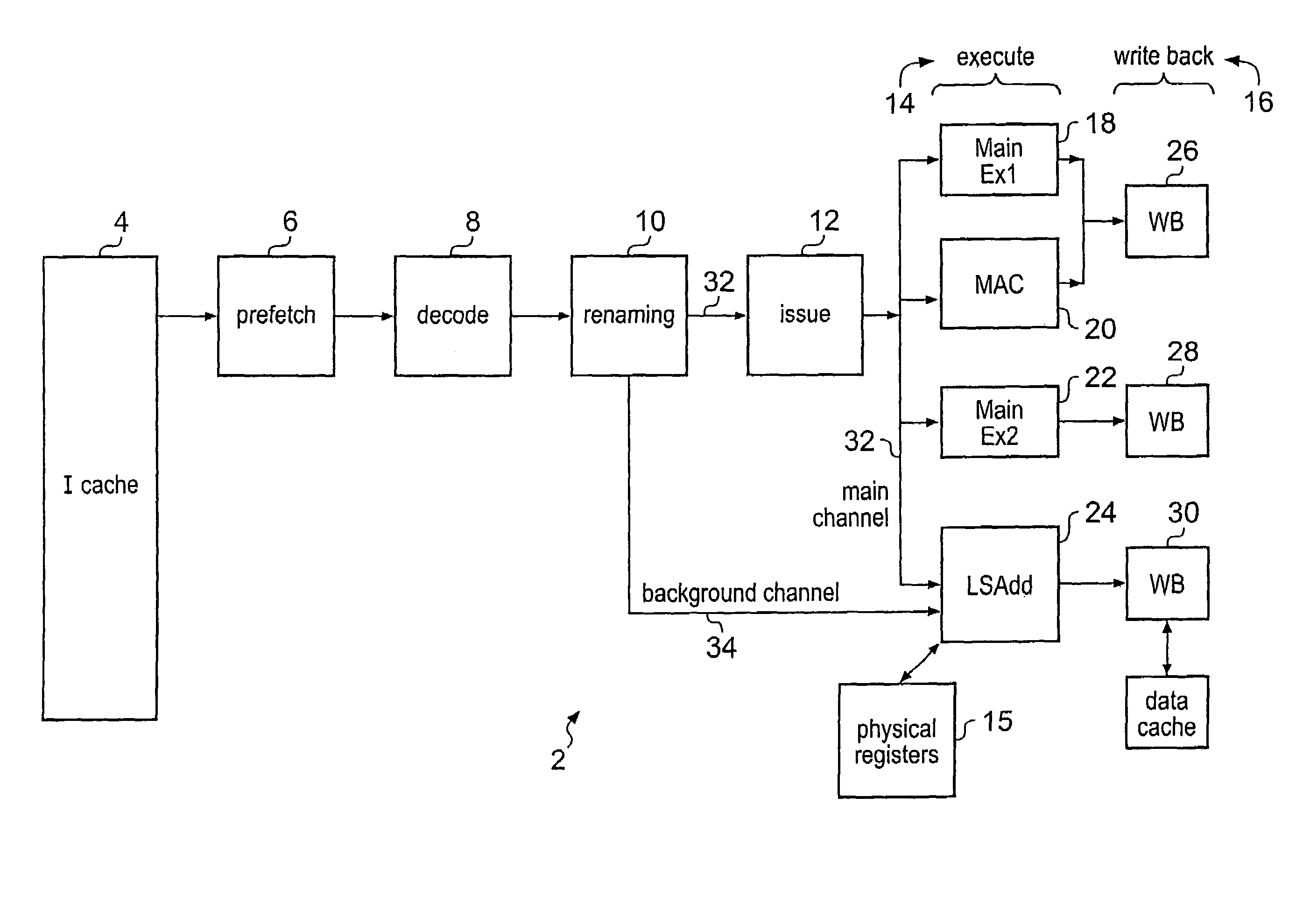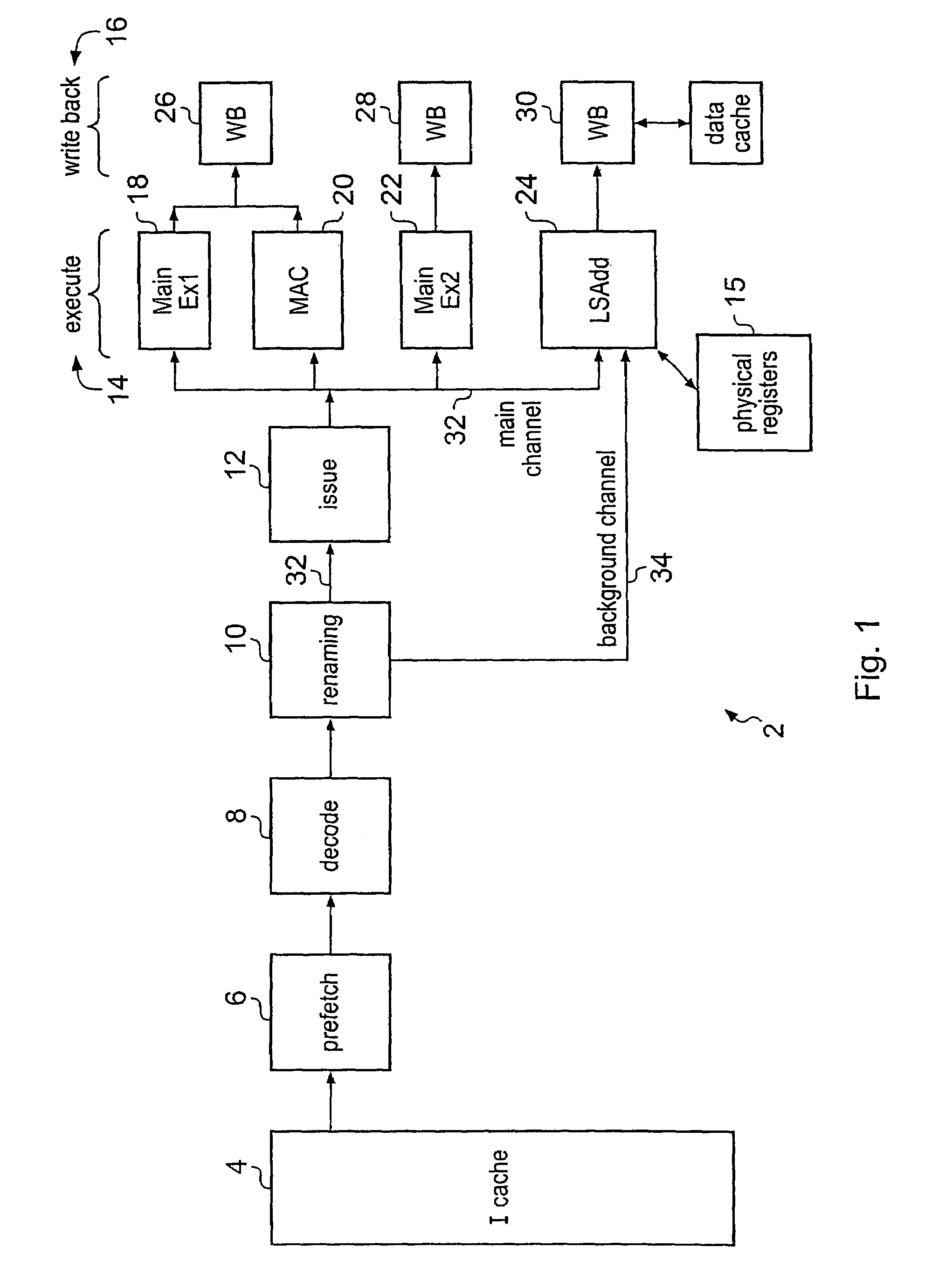Method for renaming a large number of registers in a data processing system using a background channel
a data processing system and register renaming technology, applied in the field of data processing systems, can solve the problems of increasing power consumption, disadvantageous large gate count, and associated disadvantageous large power consumption
- Summary
- Abstract
- Description
- Claims
- Application Information
AI Technical Summary
Benefits of technology
Problems solved by technology
Method used
Image
Examples
Embodiment Construction
[0038]FIG. 1 shows a data processing apparatus 2 including an instruction cache 4 supplying program instructions into an instruction pipeline which includes a prefetch stage 6, a decode stage 8, a renaming stage 10 an issue stage 12, an execute stage 14 (with associated physical registers 15) and a writeback stage 16. It will be appreciated that in practice additional and / or alternative pipeline stages may be included within such a data processing apparatus 2. Furthermore, it will be appreciated that a complete data processing apparatus 2 will typically include many additional elements which will be apparent to those skilled in this technical field and have been omitted from FIG. 1 for the sake of clarity.
[0039]The execute stage 14 includes multiple units which may process program instructions in parallel including a first main execution unit 18, a multiply accumulate unit 20, a second main execution unit 22 and a load / store address stage 24 (which acts to send requests to a load / st...
PUM
 Login to view more
Login to view more Abstract
Description
Claims
Application Information
 Login to view more
Login to view more - R&D Engineer
- R&D Manager
- IP Professional
- Industry Leading Data Capabilities
- Powerful AI technology
- Patent DNA Extraction
Browse by: Latest US Patents, China's latest patents, Technical Efficacy Thesaurus, Application Domain, Technology Topic.
© 2024 PatSnap. All rights reserved.Legal|Privacy policy|Modern Slavery Act Transparency Statement|Sitemap



